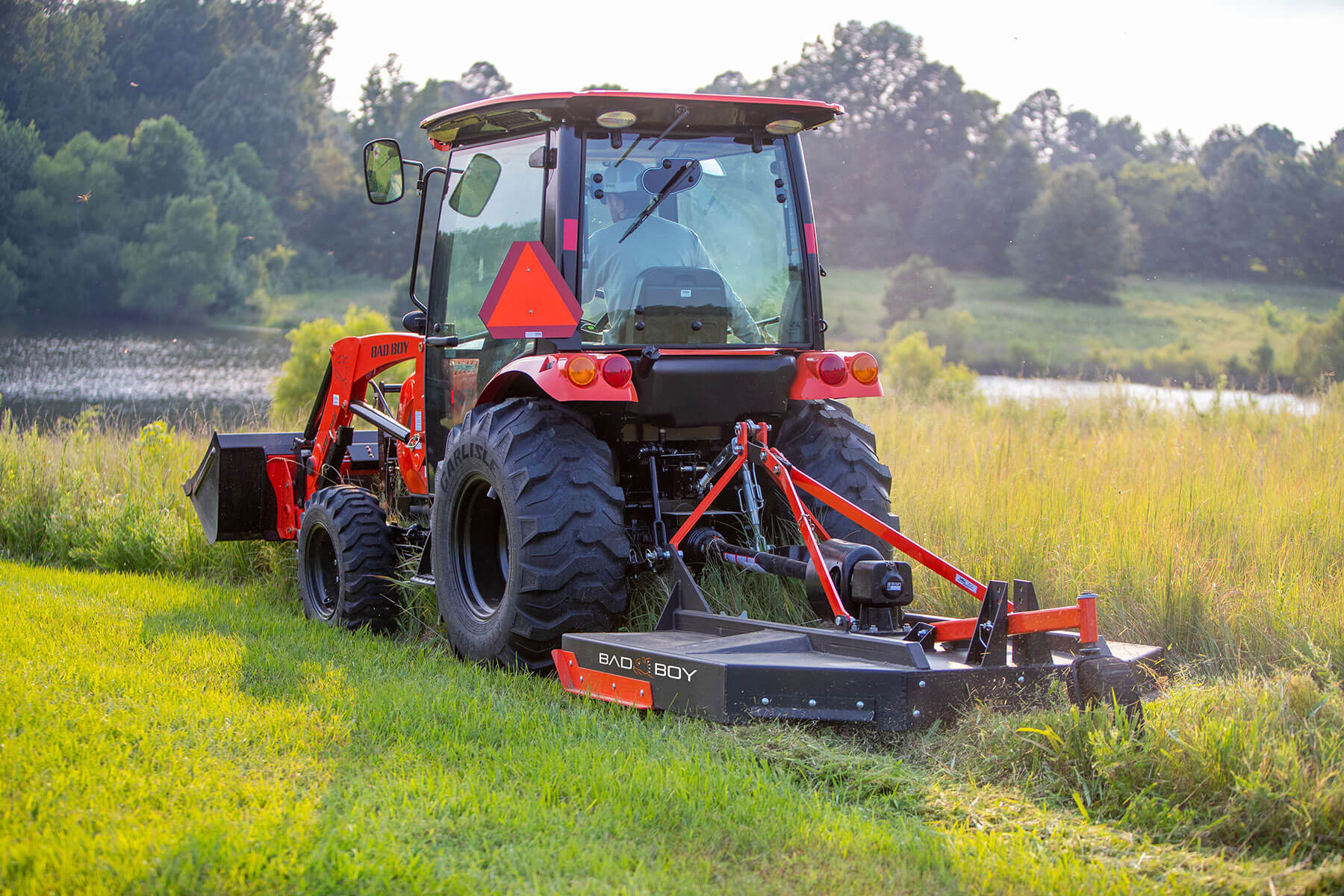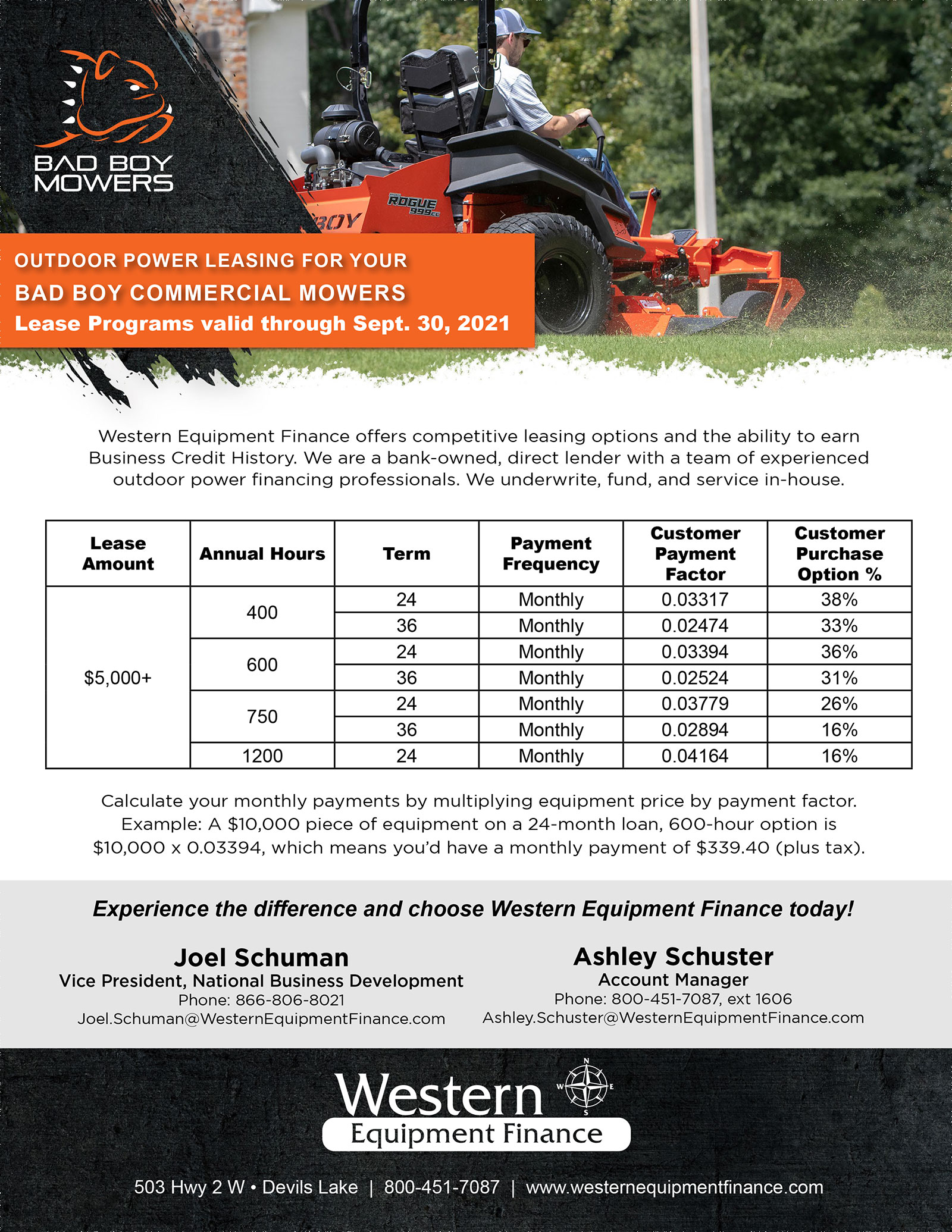The Rough Ride: Decoding the Murky World of “Bad Boy” Tractor Financing
The allure of a gleaming new tractor, ready to tackle acres of land, is powerful. For many, it represents not just a tool, but a livelihood, a step towards greater independence. However, the path to tractor ownership can be fraught with peril, especially for those with less-than-perfect credit. The term “bad boy” tractor financing, while seemingly playful, masks a complex and often predatory landscape. This 3000-word exploration delves into the realities of this financing niche, uncovering the traps, the potential benefits, and the crucial steps you need to take to protect yourself.
For farmers, landscapers, and rural property owners with blemishes on their credit reports, traditional lenders often slam the door shut. This is where “bad boy” financing steps in, offering a seeming lifeline. These lenders specialize in providing loans to individuals with poor or limited credit histories, often emphasizing quick approvals and minimal paperwork.
The Promise of Accessibility: A Double-Edged Sword

Simplified Application Process: These lenders often boast streamlined applications, bypassing the rigorous scrutiny of traditional banks. This can be appealing to those intimidated by complex financial procedures.
However, this accessibility comes at a significant cost. The “bad boy” label isn’t just a catchy phrase; it signifies a willingness to take on higher risks, which translates to higher costs for the borrower.
The seemingly easy path to tractor ownership can quickly turn into a financial quagmire. Understanding the potential pitfalls is crucial to making informed decisions.
Exorbitant Interest Rates: Paying a Premium for Risk

Significantly Higher APRs: “Bad boy” lenders often charge interest rates significantly higher than those offered by traditional lenders. These rates can easily climb into the double digits, even exceeding 20% in some cases.
Predatory Lending Practices: Exploiting Vulnerability
Hidden Fees and Charges: Be wary of hidden fees, such as origination fees, documentation fees, and prepayment penalties. These can add substantial costs to the loan.
Repossession Risks: Losing Your Investment
Strict Repossession Policies: “Bad boy” lenders are often quick to repossess equipment in the event of default, even after a single missed payment.

While “bad boy” financing may be the only option for some, it’s crucial to approach it with caution and a clear understanding of the risks.
Improving Your Credit Score: A Long-Term Solution
Review Your Credit Report: Obtain a copy of your credit report from all three major credit bureaus and identify any errors or inaccuracies.
Exploring Alternative Financing Options: Seeking Less Risky Paths
Credit Unions: Credit unions often offer more favorable loan terms to their members, including lower interest rates and more flexible repayment options.
Due Diligence: Protecting Yourself from Predatory Practices
Shop Around and Compare Offers: Don’t settle for the first offer you receive. Obtain multiple quotes from different lenders and compare the terms and conditions carefully.
“Bad boy” tractor financing can be a necessary evil for some, but it’s crucial to approach it with a clear understanding of the risks and a commitment to responsible borrowing. By improving your credit score, exploring alternative financing options, and conducting thorough due diligence, you can minimize the potential pitfalls and make informed decisions that protect your financial well-being.
Ultimately, the best approach is to avoid the need for “bad boy” financing altogether by building a strong credit history and maintaining a healthy financial profile. However, if you find yourself in a situation where it’s the only option, remember that knowledge is power. By understanding the risks and taking proactive steps to protect yourself, you can navigate the murky waters of “bad boy” tractor financing and achieve your goals without falling victim to predatory practices.
